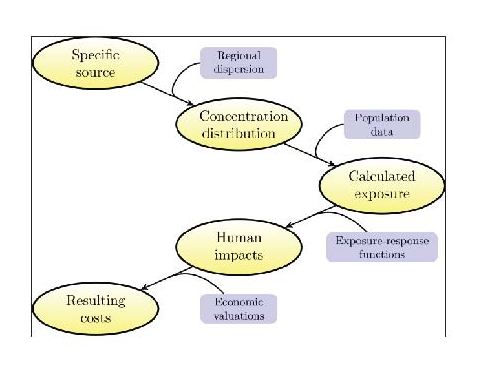Also discussed here: The cost of air pollution impacts on health (Science for Environment Policy, May 16, 2013)
Today we review the estimates of the health impacts of ten European emission sources using a model that included nonlinear processes along the source to receptor pathway. Results indicate that the top three were power production, agriculture and road traffic, although this result could be different when applied in a different year (given the influence of meteorology on the result) or a different region of the world – in Scandinavia and Canada for example, most of the power production is carried out using non-polluting renewable energy resources, unlike many EU power sources which depend on coal. The approach deserves wider application because it recognizes the contributions from less obvious or visible emission sources.

Key Quotes:
“The main objective of this work is to identify the anthropogenic emission sources in Europe and Denmark that contribute the most to human health impacts using this tagging method….capable of calculating the contribution from a specific emission source or sector to the overall air pollution levels, taking into account the non-linear atmospheric chemistry.”
“most of the atmospheric chemical compounds are linked via non-linear chemical reactions, which are important to take into account.”
“the model applied a tagging method that considers the transport of emissions and the possible production of other harmful compounds en route. Over 58 chemical compounds were considered and eight classes of particulate matter. “
“Non-linearity in the source-receptor relationship is particularly evident for certain atmospheric components, such as NOx, VOC, O3, PM, SO2, and NH3” “the major contributors from European emissions to the total health-related external costs in the whole of Europe (in order of impact) are power production, agriculture, road traffic, non-industrial (domestic) combustion (including wood combustion), combustion in manufacturing industry, other mobile sources, production processes and solvents and other product use.”
“in 2000, the sectors contributing most to the Europe-wide health cost were industrial power production (24% of costs), agriculture (24% of costs) and road transport (18% of costs). “









No comments:
Post a Comment